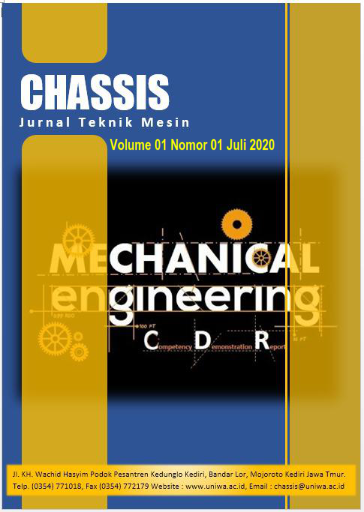PENGARUH SUDUT SERANG TERHADAP KOEFISIEN PERFORMA TURBIN ANGIN SUMBU HORISONTAL SKALA MIKRO NACA 4412
Keywords:
Wind Turbines, Angle of Attack, QBlade, Airfoil, NACAAbstract
According to one expert from the Denish Energy Agency (DEA) said that currently the trend is happening is to build a lot of small-scale wind power plants in scattered locations close to consumers, rather than building one or two large plants centrally. The purpose of this study was to determine the effect of the angle of attack on the performance of the horizontal axis wind turbine with naca 4412 type airfoil design with angular variations of 3˚, 6˚ and 9˚, 12˚, 15˚. This study uses a CFD (Computational Fluid Dynamic) simulation method using QBlade v0.963 software. The optimal performance coefficient is obtained by comparing the simulation results between variations of the angle of attack 3˚, 6˚, 9˚, 12˚ and 15˚ with QBlade software so that the most optimal coefficient of wind turbine performance is found in the variation of the attack angle 3˚ and 6˚ of 0.5. The angle of attack generally affects the value of the twist angle on the wind turbine obtained from the calculation of the angle of flow minus the variation of the angle of attack so that it affects the performance of the wind turbine produced as a whole. The best wind turbine from the simulation results is a wind turbine with an attack angle variation of 6˚ because the wind speed of 3 m / s already produces 12.5 watts of power with a rotating speed of 161 rpm, while a peak power of 500 watts is reached at 10.1 m / s wind speed and spin speed is 500 rpm.
Downloads
Downloads
Published
Issue
Section
License
Copyright (c) 2020 CHASSIS

This work is licensed under a Creative Commons Attribution-NonCommercial-ShareAlike 4.0 International License.


















